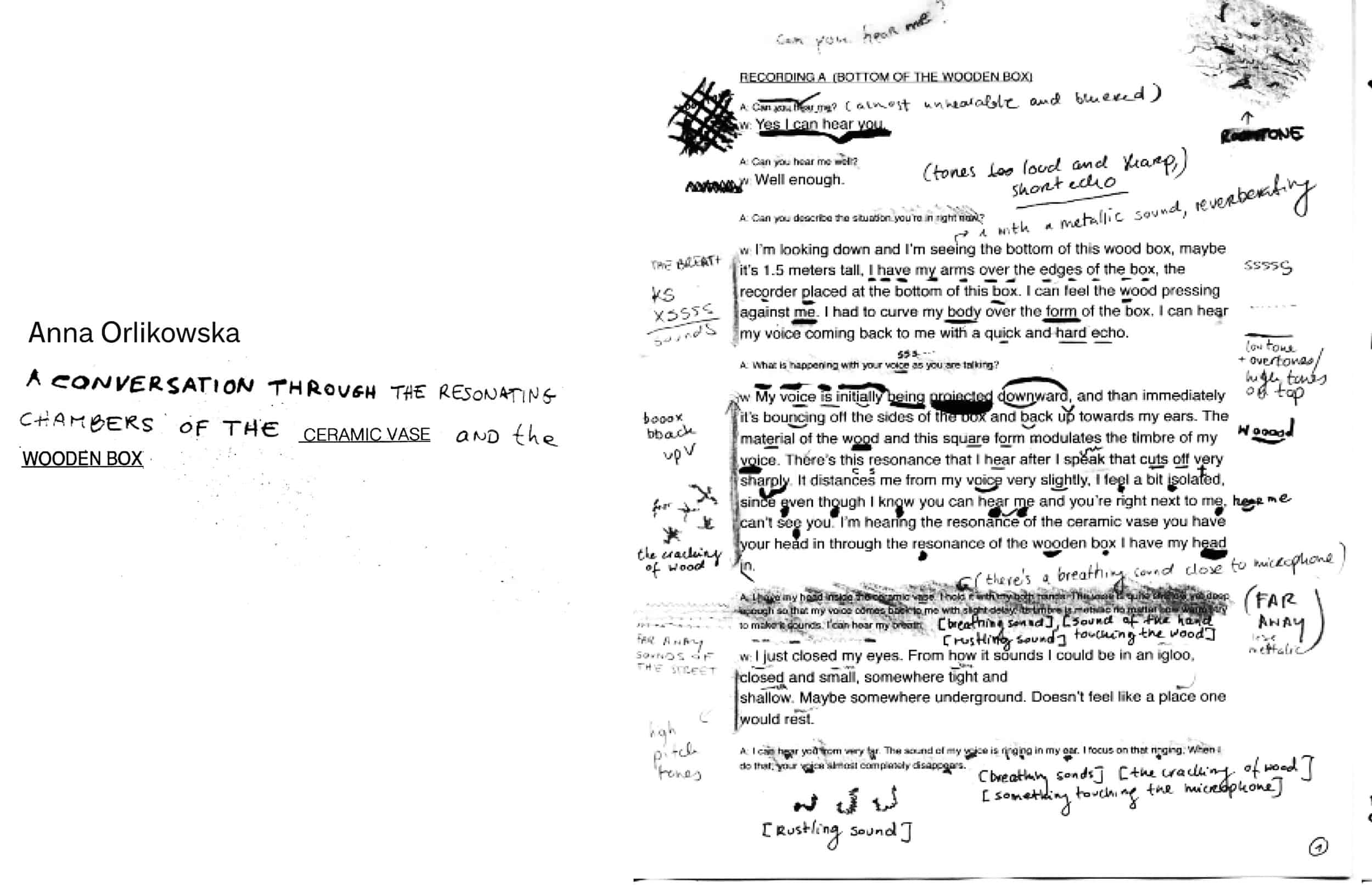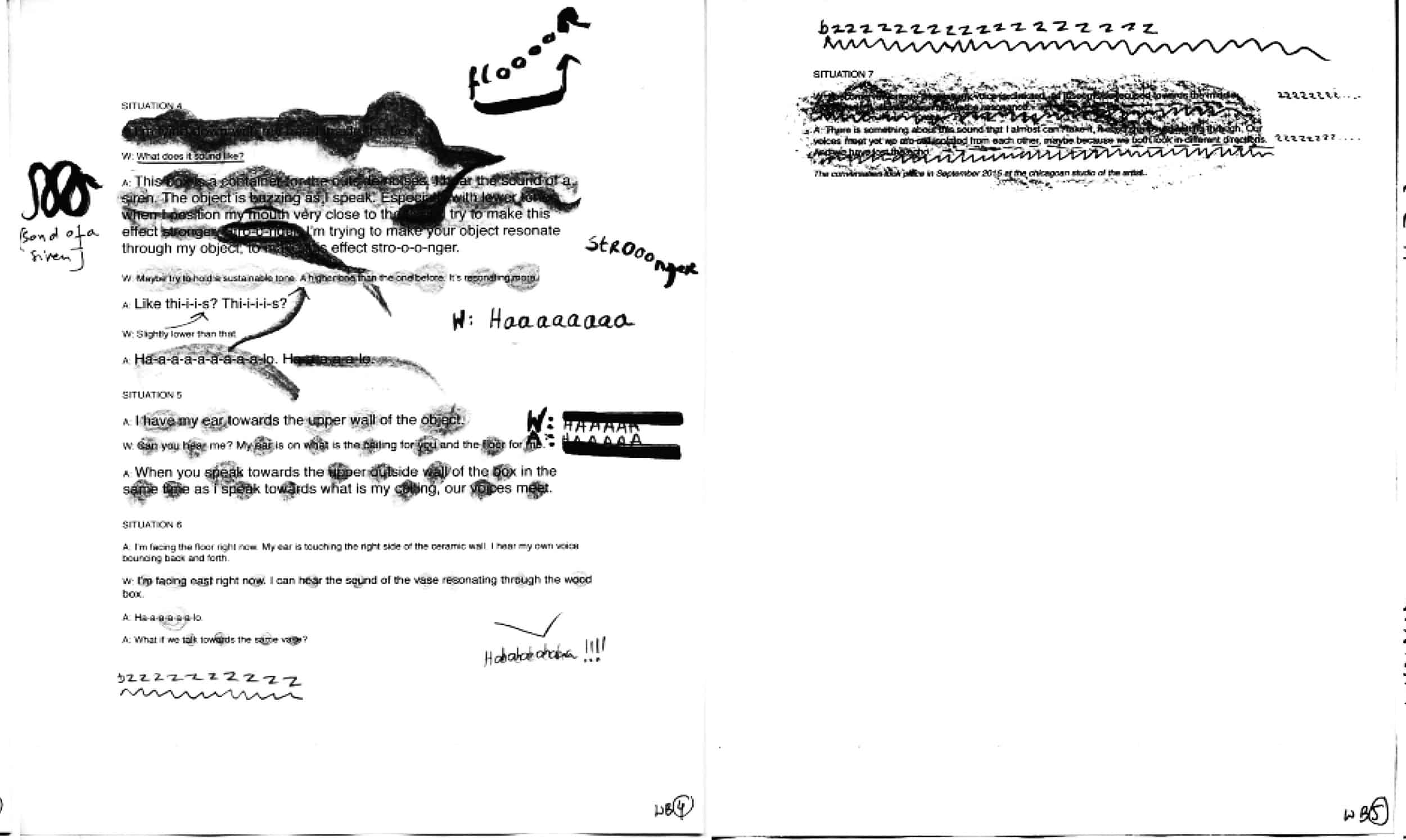Anna and I met in one of the cafes in Amsterdam to talk about her most recent art project exhibited at Art Rotterdam. She found herself among a group of artists who were awarded the Stipendium for Emerging Artists for the year 2016-2018. Granted by the Mondrian Fund, the prestigious scholarship involves the recipients’ participation in the Prospects & Concepts art show that has been staged during the Rotterdam International Art Fair for six years now.

Portrait of the artist taken during the interview, copyright by Michal Sypien.
Michał Sypień: On your website, you say that you “activate space” through your art. What does the concept of space mean to you, exactly?
Anna Orlikowska: I’d like to think of this notion in terms of architecture. Until now, I’ve been mainly working with art venues and exhibition spaces. Though, time and time again I’ve been tempted to explore other contexts. In my art practice, the formula of an art exhibit always serves me as a medium in itself, the material I can engage with. I try to shape the context, just like you’d shape a piece of clay. Every single attribute of space is of paramount importance to the project.
MS: How do you activate a space, then?
AO: You augment it, in a way. My art projects often employ sound, which I find fascinating. Sound for me is a tangible presence, a sculpture really. Any space forms a hollow container, a shape for you to mould. Sound aligns with the space it’s played in. Similarly to the performance, sound design is a site-specific art practice. My works feature subtle gestures that enhance a space, for example, emphasise every step you take in it.
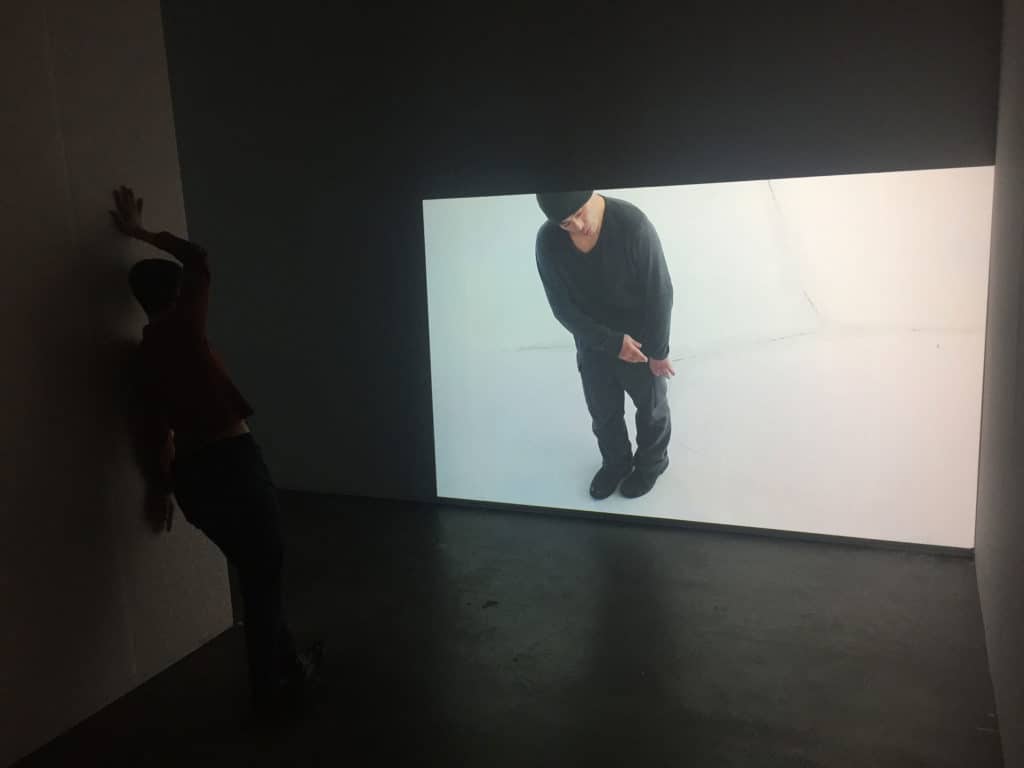
Documentation of the Anna Orlikowska presentation during Conspects & Prospects on Art Rotterdam 2018. Photo courtesy of the artist.
MS: You’ve collaborated with other performers on a number of different occasions while assuming the role of the spectacle’s director. Are there any circumstances that would still galvanize you into doing the performance yourself?
AO: There used to be, sure. My teachers told me that my own physical presence intensifies the live experience. I’ve withdrawn myself eventually to make room for a strong presence of other performers’ bodies. My intention was to unlock the underlying potential of a situation we were in.
MS: All your works are quite ephemeral, though.
AO: True, some of my initial art projects weren’t even documented on tape or paper. Further down the road, I started to care about a proper video or photographic documentation, so that my works would no longer vanish without a trace.
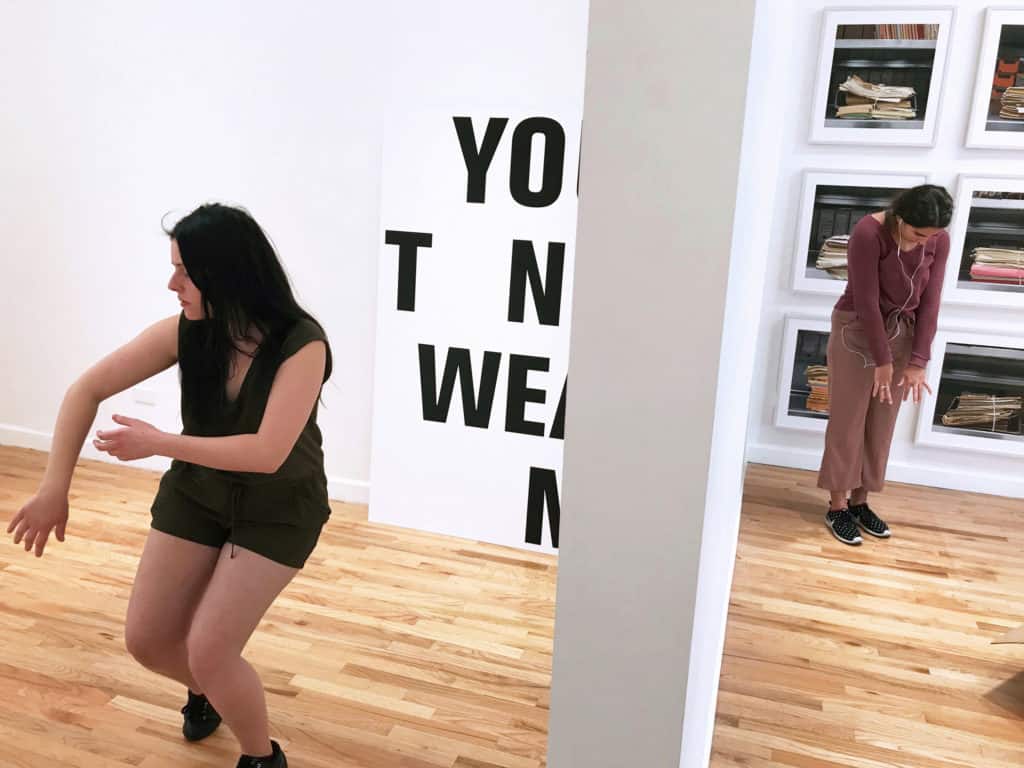
Ducumentation of „Performing The Score” project, Randy Alexander Gallery, Chicago 2017. Photo courtesy of Anna Orlikowska.
MS: How about an audio recording? You’ve mentioned before that the resonance of any pre-recorded sound played in other circumstances would be invariably altered. In what way?
AO: Sound is inextricably linked to a venue. The same sound played back in different locations changes. Even if it were to be recorded and played back in an exact same spot, a record always belongs to the past, as the recording of it took place in a different moment in time. Ultimately, you encounter a completely different space, a completely different sound.
MS: Your work basically bends the time and space continuum.
AO: Works I create often bring two points in time and space together, which is perfectly illustrated by the art project I made at the Centre for Contemporary Art Ujazdowski Castle [U-jazdowski] in Warsaw entitled “Can you hear me?” (2015). I think of sound as a subtle form of sculpture, rather than as music composition. For this project, I recorded the sound in my studio in Chicago, and played it back at the gallery in Warsaw. The sound resonated through the bodies of the listening audience, engaged all senses. What appealed to me the most was the notion of resonance.
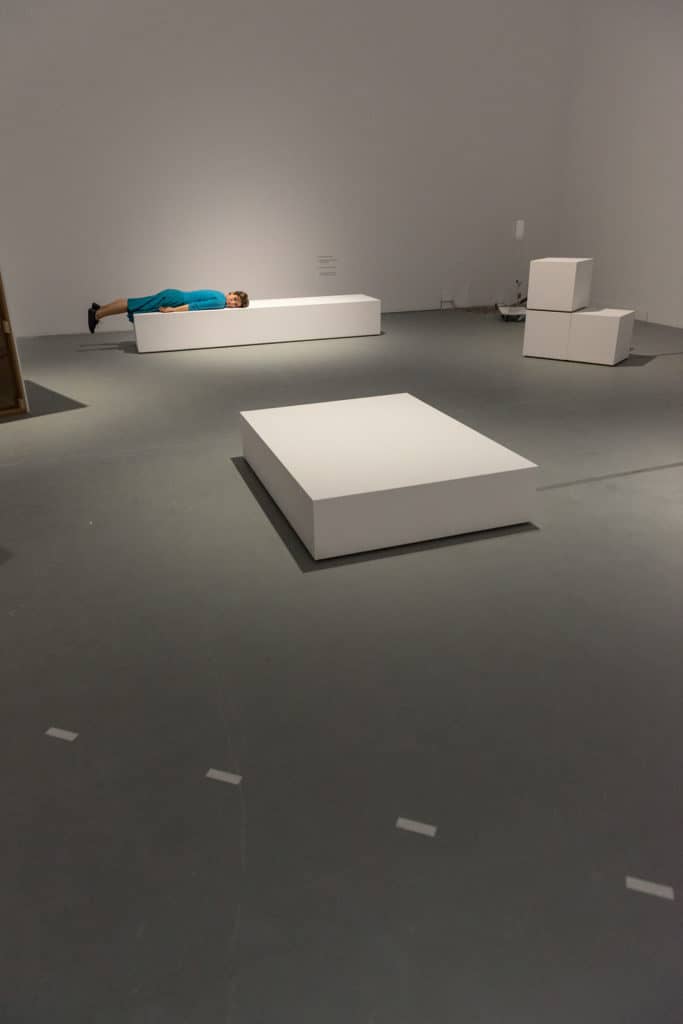
„Can you hear me?” exhibition view, Centre for Contemporary Art Ujazdowski Castle, Warsaw 2015. Photo courtesy of Centre for Contemporary Art Ujazdowski Castle.
MS: How did you approach this subject?
AO: When studying at the School of the Art Institute of Chicago, I used to invite friends to my studio to perform various sound experiments. We were talking to each other through different resonating objects. We were testing the resonance of many everyday objects we stumbled upon, listening to our modulated voices. For instance, one person said something into the ceramic vase, the other addressed a pedestal. It was like a child play. We were doing that in different body positions. We were trying to describe the experience. It is amazing that when you isolate one sense, the other one automatically heightens.
MS: What do you mean? Did you experience synaesthesia? Did the attempts to verbalize sound evoke visual, tactile and olfactory sensations?
AO: Yes, various associations related to the sense of hearing and smell surfaced in that moment. I didn’t plan the project to be about synaesthesia. It was a side effect. Another interesting discovery was that while trying to find the right words to describe our experiences, our conversations turned into poetry.
Fragments of the graphic score related to the „Can you hear me” exhibition, Centre for Contemporary Art Ujazdowski Castle, Warsaw 2015. Photo courtesy of Anna Orlikowska.
Fragments of the graphic score related to the „Can you hear me” exhibition, Centre for Contemporary Art Ujazdowski Castle, Warsaw 2015. Photo courtesy of Anna Orlikowska.
MS: How did you present your findings in the Warsaw exhibition?
AO: Customized pedestals available at the gallery were placed around the room. Additionally, speakers emitting sounds recorded in Chicago were inserted into those pedestals and gallery walls. The aim of the design was to generate the highest possible degree of resonance originating from every single space component. The installation became also a choreographic score guiding the listeners and their body movement. Some objects were static, other mobile and furnished with wheels, so you could’ve adopted myriad positions. During the show’s opening, four performers emulated the behavior of an ideal “gallery visitor.” Their covert performance encompassed hardly discernible understated gestures meant to enliven the space.
MS: So the exhibit actually showcased the continuation of your experiments with soundscape rather than their final results. The audience was offered a unique chance to experience first-hand the phenomenon you’ve examined.
AO: The Warsaw work consisted of several different stages. The transcribed conversations from my Chicago studio were published in the exhibition catalogue. Later on, I treated its content as poetry and turned it into a performative reading. I also translated sound recordings into a series of drawings.
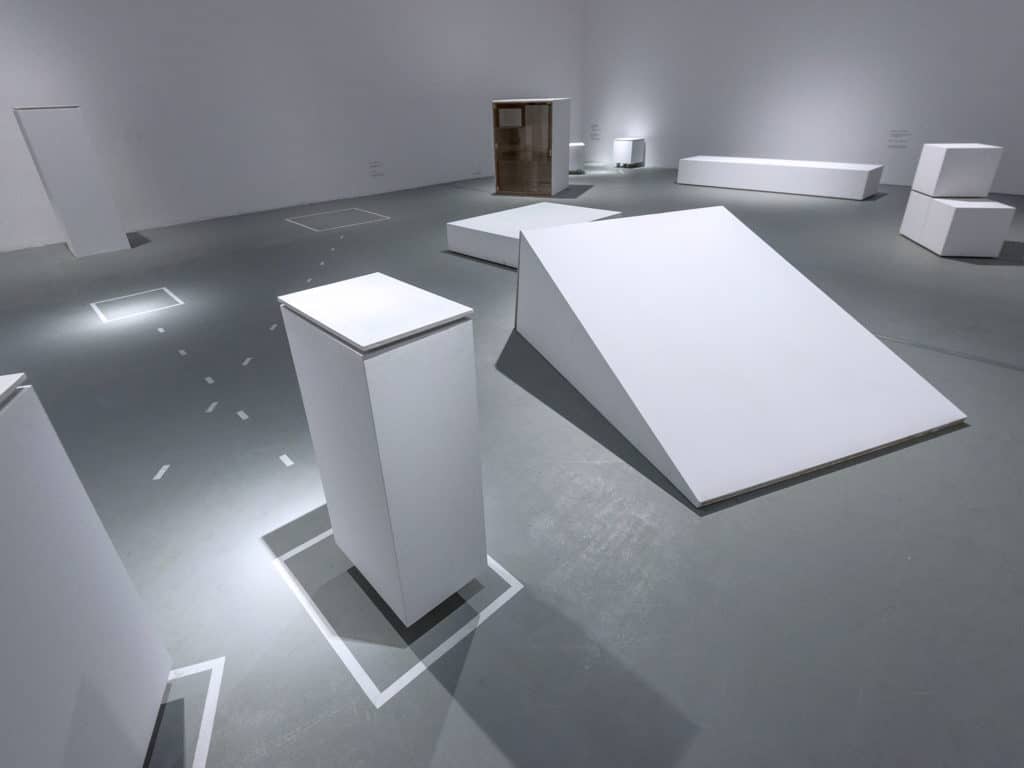
„Can you hear me?” exhibition view, Centre for Contemporary Art Ujazdowski Castle, Warsaw 2015. Photo courtesy of Centre for Contemporary Art Ujazdowski Castle.
MS: It seems to me that your works often rely on the re-rendering process, a seamless transition from one medium or activity into another.
AO: That’s right. Fluidity of a medium permeates my entire art practice. Last year, for instance, a Chicago based artist Jeff Prokash asked me to create sound composition on the basis of the 300-page graphic music score, which he designed. The piece I created was divided into three vocal parts and lasted a few hours. Our collaborative art project evolved even further as I recruited three performers to translate each vocal part into movement. The dancers wore headphones, so they were the only ones who heard the sound. The dancers were making delicate gestures, which resonated with sound. The audience [at the Randy Alexander Gallery in Chicago] watched the performance with so much attention, in silence, without hearing the soundtrack.
MS: All these fascinations you’ve just mentioned echo through your most recent art project put on display during Art Rotterdam 2018. Art fairs tend to follow a certain formula. How did you approach the presentation’s context?
AO: It was definitely a challenge. The space I was offered was quite isolated from the rest of the booths and I decided to work with its specific conditions.
MS: Your show featured the on-camera performance, as well as words spoken by someone outside the frame. The video was screened against the background of another live performative action. This time around, the dancer was present for real, her body in fact occupied the space.
AO: Yes, every piece you’ve just listed stemmed from the performers’ reinterpretation of the exact same experience they had with the sculptural object I presented them with.
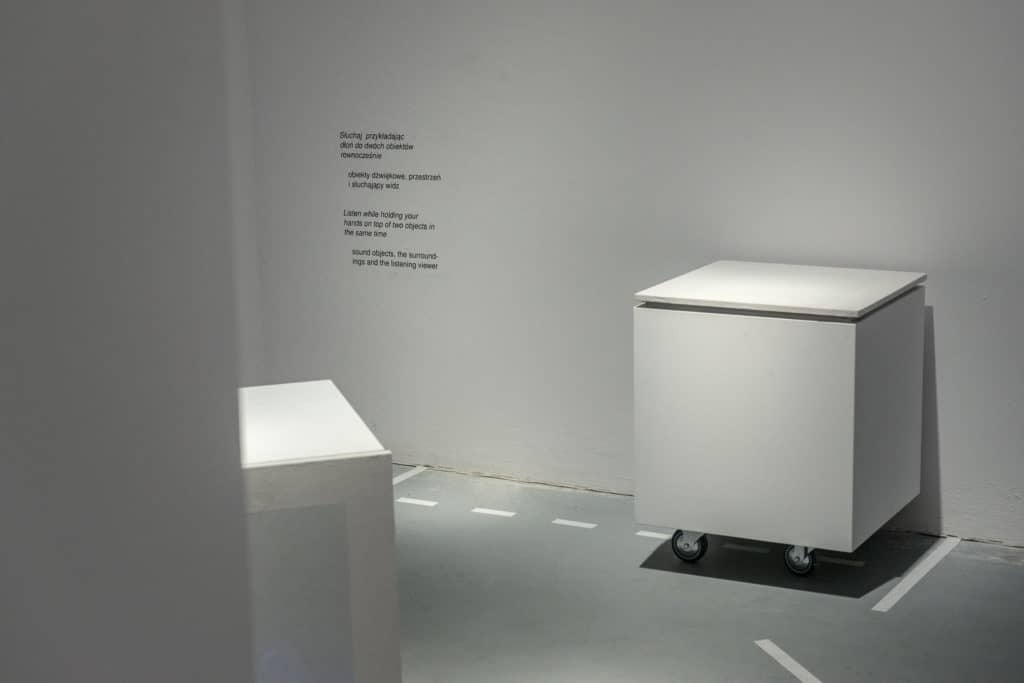
„Can you hear me?” exhibition view, Centre for Contemporary Art Ujazdowski Castle, Warsaw 2015. Photo courtesy of Centre for Contemporary Art Ujazdowski Castle.
MS: The piece was very subtle and required concentration on part of the viewer, which might be hindered by the all-encompassing hustle and bustle of the massive art fair. Everyone is usually running amuck trying to squeeze in as many art presentations and events as they possibly can.
AO: I somehow managed to create a microclimate that was governed by its own unique rules. I was impressed by the attention people gave to the work. Some visitors nipped in for just a second, yet others stayed to watch the performance for a long time.
MS: A majority of works exhibited during art fairs is often limited to the overtly beautiful and aesthetically pleasing objects. Gallery stands place a special emphasis on the material art form, which I found slightly overbearing at Art Rotterdam. You, on the other hand, defied the convention of an art object and opted for its dematerialization.
AO: I do value the physical aspect of an artwork. Is there anything more physical than someone’s body? I‘ve always looked for a balance between the tangible and the intangible. I believe it has something to do with my education. The Rietveld Academie had a very conceptual approach towards the making process. Studying at an American art school directed my attention back to materiality.
MS: Lately, you’ve been living out of a suitcase, travelling between the US and the Netherlands. You’re a Warsaw-born artist who studied in Amsterdam and Chicago, participated in the residency programme in New York. Currently, you’re staying in Amsterdam while making preparations to leave for another residency in LA. I can’t help it but feel that your lifestyle exerts a considerable impact on the state of your art practice. You keep crossing the geographical borders of the countries and continents. Your works of art keep crossing the figurative borders between various media.
AO: Every city I live in has a profound influence on the areas of my interest. I initially relished in filling an empty space with noise-like sounds, which spurred me on to pursue the idea of “acoustic moulds”. At that time, Amsterdam was an exceptionally quiet city, cars and traffic notwithstanding. United States are always bursting with the sounds of metropolitan life, blaring sirens and conversations in pubs. It’s so loud in New York. Naturally, I started gravitating towards the visual representation of peace and quiet.
MS: According to Zygmunt Bauman, people living in the fluid reality are prone to experiencing an identity crisis you’re apparently immune to. Amid quite frequent shifts in time zones and art media, you’re doing just fine. What’s your secret? What are the great thinkers that inspire you?
AO: Merleau-Ponty and Jean-Luc Nancy’s views on listening immediately spring to mind. As a teenager, I was fascinated with Bergson’s understanding of time. My friend has recently mentioned that she associates my works of art with his philosophy. I guess the things you feel deeply affected by are always etched on your mind…and resonate within you.
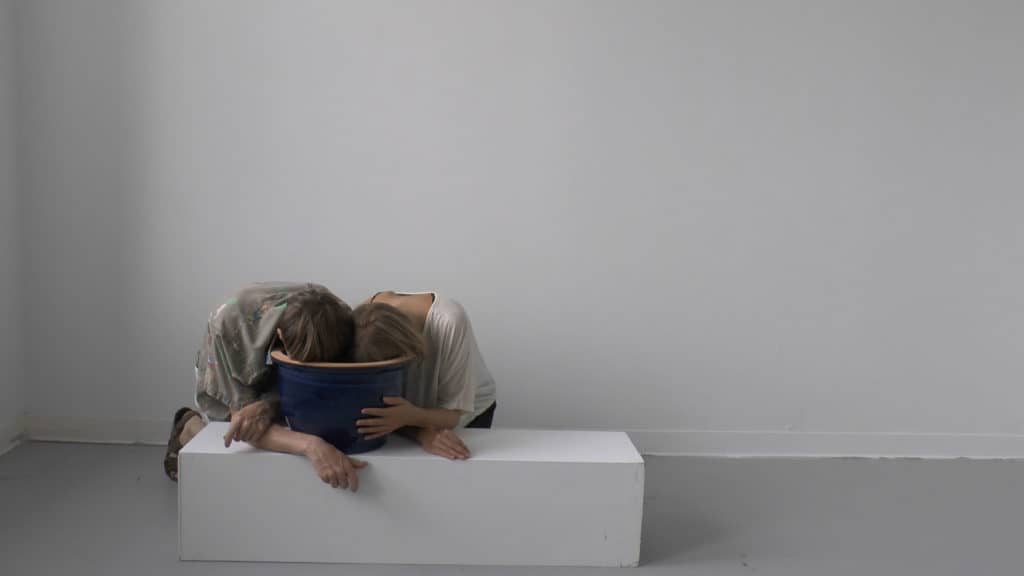
„Can you hear me?” exhibition view, Centre for Contemporary Art Ujazdowski Castle, Warsaw 2015. Photo courtesy of Centre for Contemporary Art Ujazdowski Castle.





